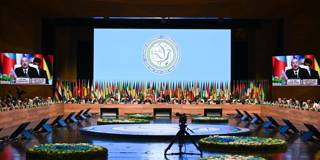Around the world, foreign-policy strategists are grappling with new international dynamics, from the Sino-American rivalry and ongoing hot wars to the broader breakdown in multilateral global governance. However, there is much debate about whether global power and alignments are truly shifting, and in what ways.
PS Quarterly regularly features predictions from leading thinkers and uniquely positioned commentators on a topic of global concern. In this issue of PS Quarterly, Project Syndicate commentators offered their insights in response to the following proposition:
“The coming year will confirm that the world is quickly moving toward greater multipolarity or “non-alignment.”
In the coming year, we will see not greater multipolarity, but greater bipolarity. China has replaced Russia as America’s main competitor in a new cold war that is less about ideology and more about markets and technology. The $18 trillion Chinese economy has already overtaken that of all 27 European Union countries combined, and China is the largest trading partner to more than 120 countries. Its Belt and Road Initiative continues to build infrastructure around the world, and the Beijing-based Asian Infrastructure Investment Bank (with a $100 billion capitalization) has 109 members representing 80% of the world’s population. In January, the China-dominated BRICS (Brazil, Russia, India, China, and South Africa) will expand to include Argentina, Ethiopia, Egypt, Iran, Saudi Arabia, and the United Arab Emirates.

PS Quarterly regularly features predictions from leading thinkers and uniquely positioned commentators on a topic of global concern. In this issue of PS Quarterly, Project Syndicate commentators offered their insights in response to the following proposition:
“The coming year will confirm that the world is quickly moving toward greater multipolarity or “non-alignment.”
Adekeye Adebajo
In the coming year, we will see not greater multipolarity, but greater bipolarity. China has replaced Russia as America’s main competitor in a new cold war that is less about ideology and more about markets and technology. The $18 trillion Chinese economy has already overtaken that of all 27 European Union countries combined, and China is the largest trading partner to more than 120 countries. Its Belt and Road Initiative continues to build infrastructure around the world, and the Beijing-based Asian Infrastructure Investment Bank (with a $100 billion capitalization) has 109 members representing 80% of the world’s population. In January, the China-dominated BRICS (Brazil, Russia, India, China, and South Africa) will expand to include Argentina, Ethiopia, Egypt, Iran, Saudi Arabia, and the United Arab Emirates.